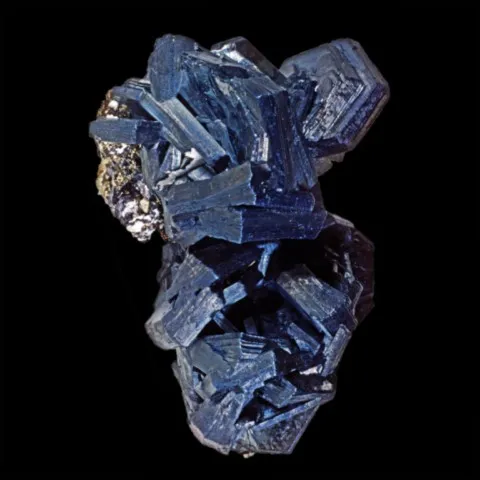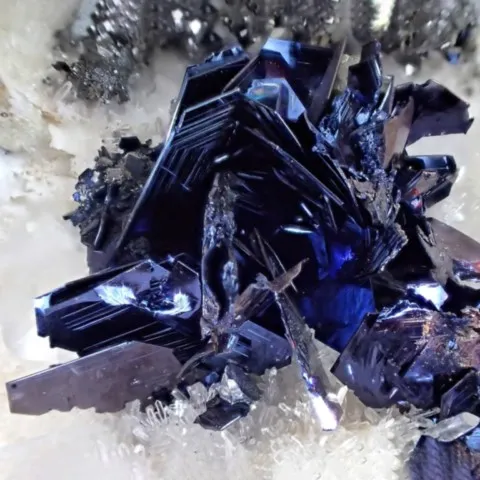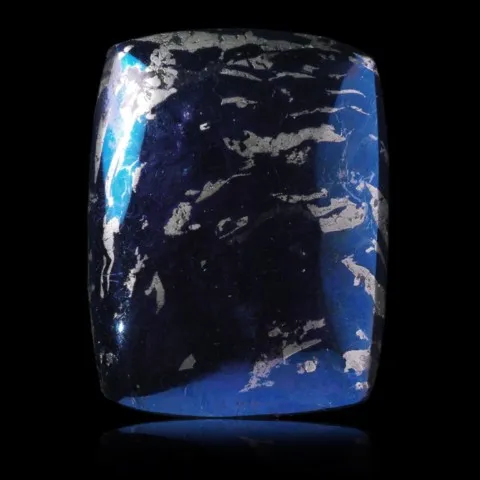COVELLITE
Class : Sulfides and sulfosalts
Subclass : Sulfides
Crystal system : Hexagonal
Chemistry : CuS
Rarity : Common
Primary or secondary sulfide, covellite is common in the majority of hydrothermal copper deposits. It is most often secondary and comes from the alteration of chalcopyrite : it is then found in abundance, in foliated masses, in the cemantation zone in the company of numerous copper minerals (cuprite, digenite, chalcocite, malachite, native copper, etc...), as well as in alteration coatings on most other copper sulphides. More rarely, covellite is a primary mineral of volcanic fumaroles (Vesuvius, Italy), or of epithermal gold deposits. Its name was given to it in honor of the Italian mineralogist Niccolo Covelli who discovered this mineral at Vesuvius. Covellite is lamellar, flexible, of a characteristic deep indigo blue, with brass yellow or purplish red iridescence. Its hardness is low (1.5 to 2). It is systematically associated with pyrite, chalcopyrite or bornite. Its crystals are rare and seem specific to primary covellite. They appear in the form of small hexagonal tablets grouped into hexagonal lamellar aggregates, sometimes assembled into rosettes. This mineral constitutes an interesting related copper ore which has locally formed significant masses. It is occasionally cut into cabochons.
Main photo : Covellite from Leonard Mine, Butte Mining District, Silver Bow County, Montana, USA © Eugene & Sharon Cisneros
Covellite in the World
Twinning
No twin known for this mineral species.
Fakes and treatments
No fake identified for this mineral species.
Hardness : 1.5 to 2
Density : 4.6 to 4.7
Fracture : Irregular
Streak : Gray-black
TP : Opaque
RI : 1.450 to 2.620
Birefringence : 1,170
Optical character : Uniaxial +
Pleochroism : Visible
Fluorescence : None
Solubility : -
Magnetism : Diamagnetic
Radioactivity : None





